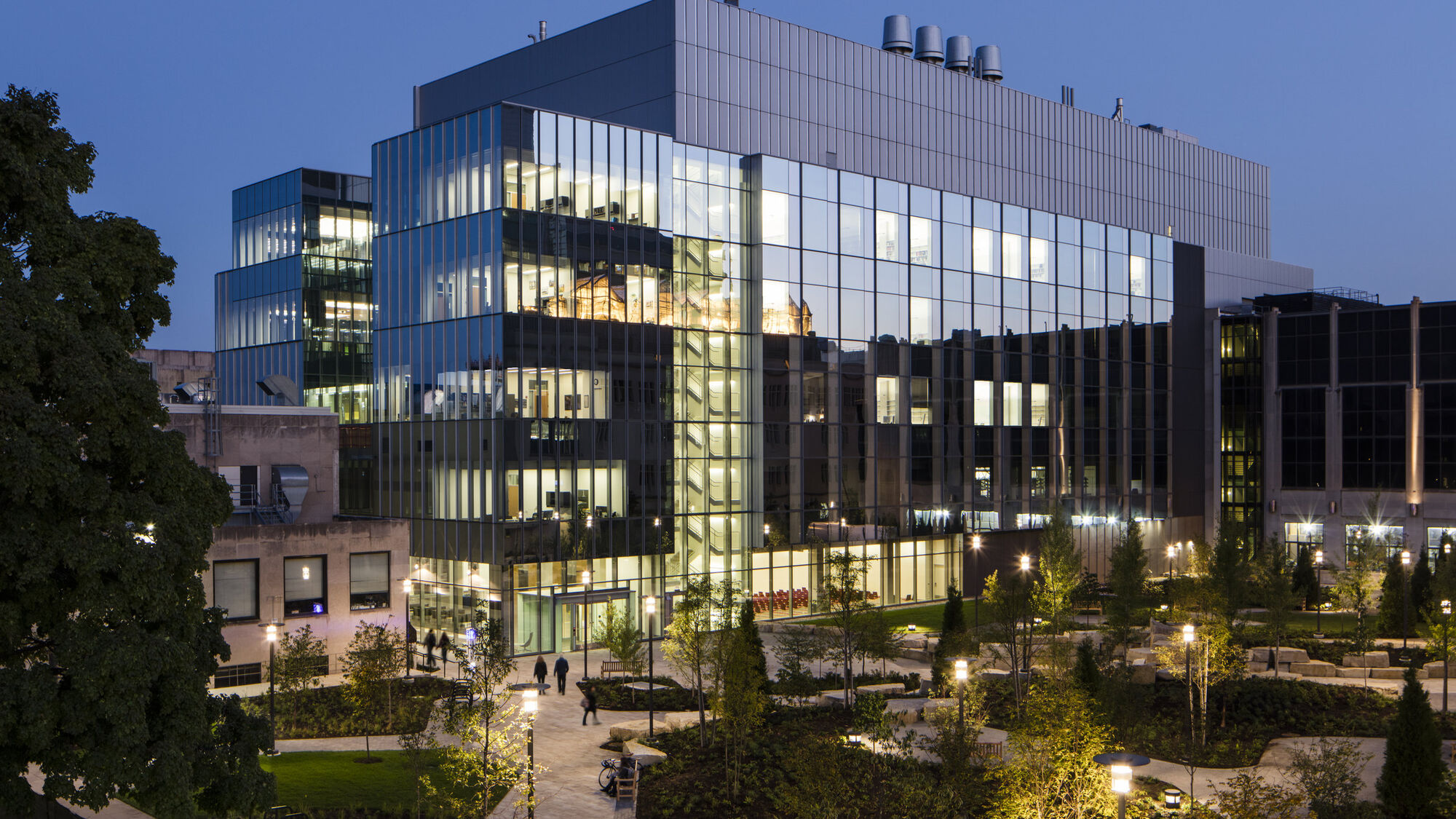
The University of Chicago
William Eckhardt Research Center
Precision research environments, building-wide flexibility, and space-specific efficiency.
Supporting the collaboration of theorists and experimentalists developing products in the fields of material sciences, medicine, chemistry, biology, synthesis, and other emerging areas of research, the engineered systems of the Eckhardt Research Center balance whole-building performance requirements and leverage space-specific efficiency opportunities to provide precision research environments, building-wide flexibility, and ideal office and collaborative spaces.

- 30,409
- MMBtu/yr annual energy savings
Two levels below grade, six labs house lasers and high-performance optics used in experimental research related to spintronics, quantum information, and nanoscale sensing. Precision temperature/humidity sensing devices and individual dedicated air handling units with fast-acting controls and magnetic actuated valves maintain environmental requirements of 72°F ±0.5° and 37.5% RH ±2%. Two high-performance Class 10,000 optics labs meet requirements of 70°F ±0.5° and 37.5%RH ±2%. Designed without identified users, upper level labs can accommodate computational, wet (chemistry, biology), dry (physics/astronomy), or damp configuration without alteration to primary engineering infrastructure, using corridor access for maintenance and modification. The building also includes a sub-grade 10,000 gsf nano-fabrication clean room.

The facility is engineered to LEED Silver standards, with efficiencies specific to precision lab, flex lab, public, and collaboration spaces including variable air volume, total energy wheel technology, low flow fume hoods, reduced (unoccupied) air change rates, variable speed exhaust, run-around heat recovery, modular heat pump chillers, radiant floor heating, and active chilled beams.
- $240k
- value of annual energy savings
“We are excited that the William Eckhardt Research Center provides a sophisticated and beautiful home to support our distinctive programs in molecular engineering and astrophysics. This facility will allow for even more ambitious work. Equally significant, this building befits the Department of Astronomy and Astrophysics’ long tradition of scientific eminence, and its continuing importance in that field of study.”
